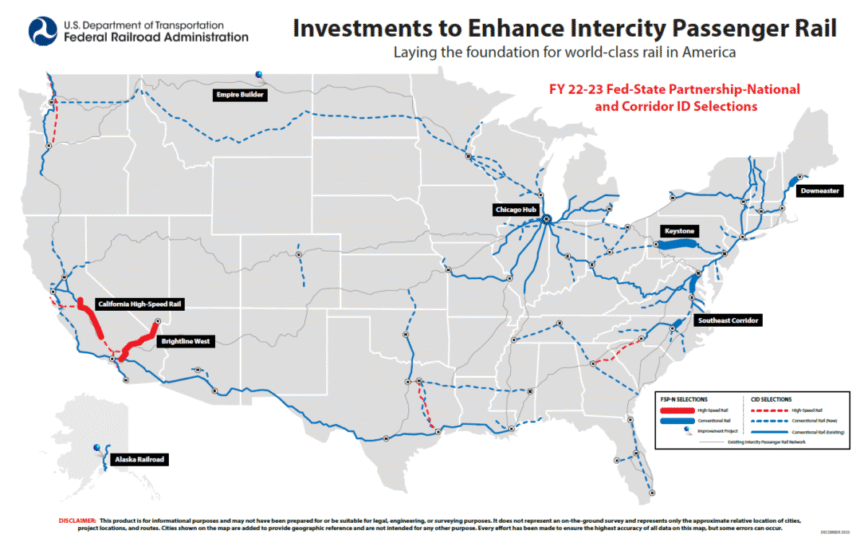The Future of High-Speed Rail in the U.S.
The United States, home to over 340 million citizens, boasts an extensive network of interstate highways and thousands of public airports but lacks a high-speed rail (HSR) system. Despite this, efforts are underway with two HSR projects currently under construction and a few more in planning stages. Could these developments finally align the U.S. with the advanced rail systems of countries like China, Japan, and those across Europe?
Current Projects
Rick Harnish, executive director of the High Speed Rail Alliance, expressed optimism regarding the construction of major HSR routes. “The first project connects San Francisco and Los Angeles, a challenging venture given California’s mountainous terrain,” he explained. “The second line, from Las Vegas to Los Angeles, benefits from relatively flat land, making its construction easier.”
Plans are also in motion for a rail line connecting Portland, Oregon, to Seattle, Washington, and eventually Vancouver, Canada, along with a route from Dallas to Houston. However, Harnish cautions that progress in these initiatives has been sluggish. The Dallas-Houston connection, in particular, faced setbacks when former President Trump’s administration canceled a significant federal grant.
Global Contrast in High-Speed Rail
By comparison, China’s HSR network is set to surpass 50,000 kilometers (approximately 31,000 miles) this year alone, while the European Union operates 8,556 kilometers of HSR tracks, with Spain leading at 3,190 kilometers. The UK’s High Speed 1 connects London to the Channel Tunnel, while High Speed 2 is presently under construction despite budgetary challenges.
While definitions of high-speed rail vary, the International Union of Railways stipulates speeds above 250 km/h (155 mph) for trains to qualify. According to rail industry journalist Will Doig, the U.S. lags behind its global counterparts due to a cultural mindset favoring car travel and a lack of strong governmental support for rail investment. “Many people believe we don’t even need this infrastructure,” Doig noted.
Amtrak and Future Prospects
Amtrak, the government-owned passenger train service, recently witnessed the resignation of its president, Stephen Gardner, amid alleged pressures from the White House. Currently, Amtrak does not operate any HSR trains, but plans are to introduce 28 NextGen Acela trains capable of reaching 160 mph on the Northeast Corridor. However, only about 50 miles of this 457-mile stretch allows speeds over 150 mph.
Interestingly, the California High-Speed Rail project is state-led, with completion expected by 2033, while the Brightline West project from Los Angeles to Las Vegas is privately funded, anticipated to open in 2028.
The Global HSR Landscape
As of now, 23 countries have operational HSR systems, according to Harnish’s organization, which advocates for high-speed rail in the U.S. Building a safe and efficient HSR system in the U.S. involves overcoming significant logistical challenges, including preventing train-highway crossings and maintaining a straight, sealed corridor for the trains.
China continues to expand its HSR network aggressively, with projections indicating it could stretch to around 60,000 kilometers by 2030. Notably, Chinese cities connected by HSR have seen economic growth rates of approximately 14.2%.
| Country | HSR Length |
|---|---|
| China | 50,000+ km |
| European Union | 8,556 km |
| Spain | 3,190 km |
| UK | 68 miles (n/a in km) |
| United States | None operational |
As the debate surrounding high-speed rail progresses, both Doig and Harnish emphasize the need for a cultural shift towards embracing public transport. They argue that clarity on the future of the nation’s transportation system is crucial for fostering governmental support and securing the necessary investments for these ambitious projects.




